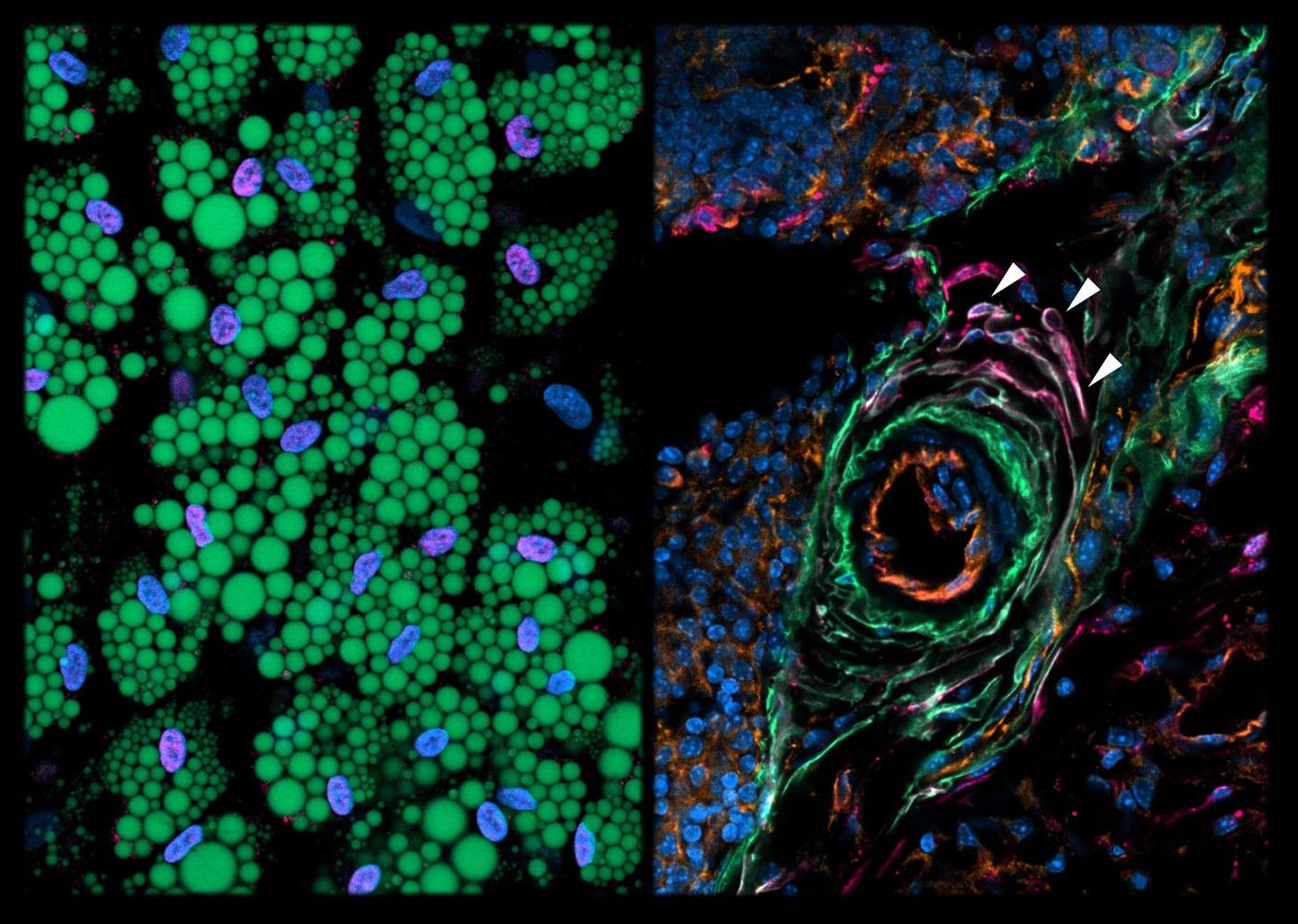Some Cells can Suppress Fat Formation
Obesity is connected to a variety of health problems, and scientists have long wanted to know exactly how fat cells, called adipocytes, are formed. Fat deposits are unstructured and full of different kinds of cells that confound the understanding of adipogenesis, in which precursor cells give rise to mature fat cells. A new study by research groups in the lab of Bart Deplancke's lab at École polytechnique fédérale de Lausanne (EPFL), Christian Wolfrum at ETHZ, and Gianni Soldati, who leads the Swiss Stem Cell Foundation, has now overcome the technical challenges to characterize the types of cells within fat deposits. They identified a new type of cell that appears to suppress fat cell formation.
"Controlling fat cell formation is not only important for improving metabolic health," said Deplancke. "It could also be important for slowing aging, since several tissues, such as bone marrow and muscle, accumulate fat cells over time, which negatively affects their function. Our discovery has, therefore, widespread biomedical implications and we cannot wait to learn more about these intriguing cells."
In this study, which was reported in Nature, the researchers performed single-cell transcriptomics (get an explanation of the technique from Bart Deplancke in the video below). That allowed that to learn about every gene that was active in one cell at a given time, like a snapshot of genetic activity. Cells that are similar will also have similar patterns of gene expression, and that enabled the scientists to classify the various types of cells in adipose tissue.
Several populations of cells were found in fat deposits in mice. Those subpopulations were then further characterized after the researchers isolated them. One type of cell did not differentiate into adipocytes and was found to actually suppress the adipogenesis of other cells. The team called that group the Aregs: adipogenesis-regulatory cells.
The investigators followed up on this finding in humans. There they found another, parallel population of cells that acted to suppress adipogenesis. They are hopeful that the mechanisms of the adipogenesis-suppressing human cells could be harnessed for therapeutic applications.
"Our work shows that there are still many human cell types that await discovery," says Christian Wolfrum. "Several of these may be very important also for medical reasons such as the Aregs that we found in this study."
Sources: AAAS/Eurekalert! Via EPFL, Nature









